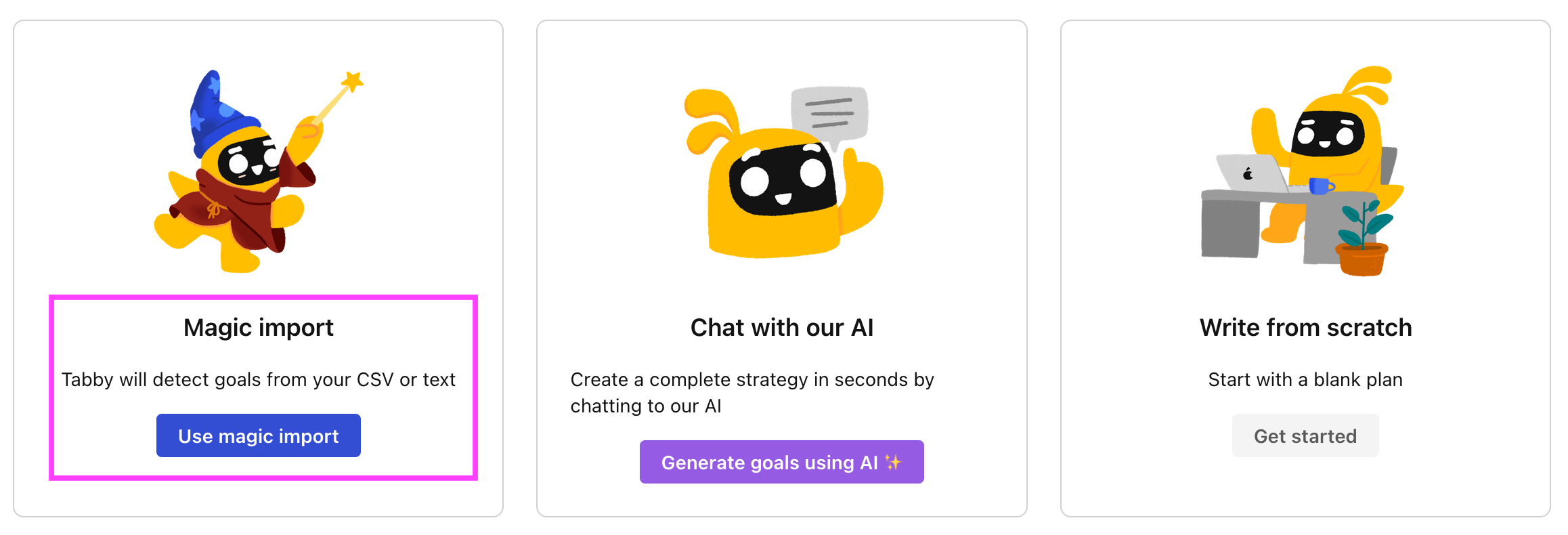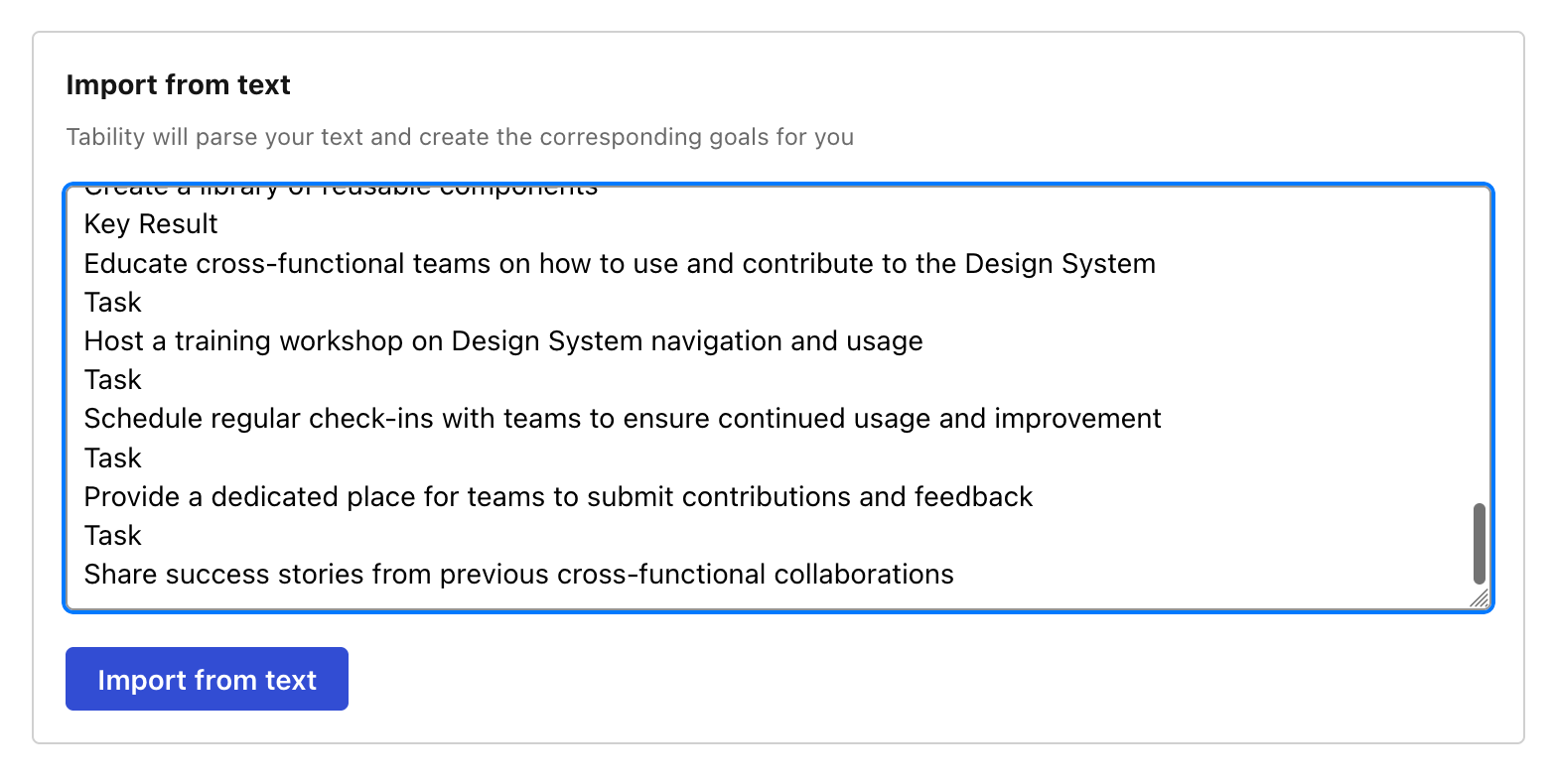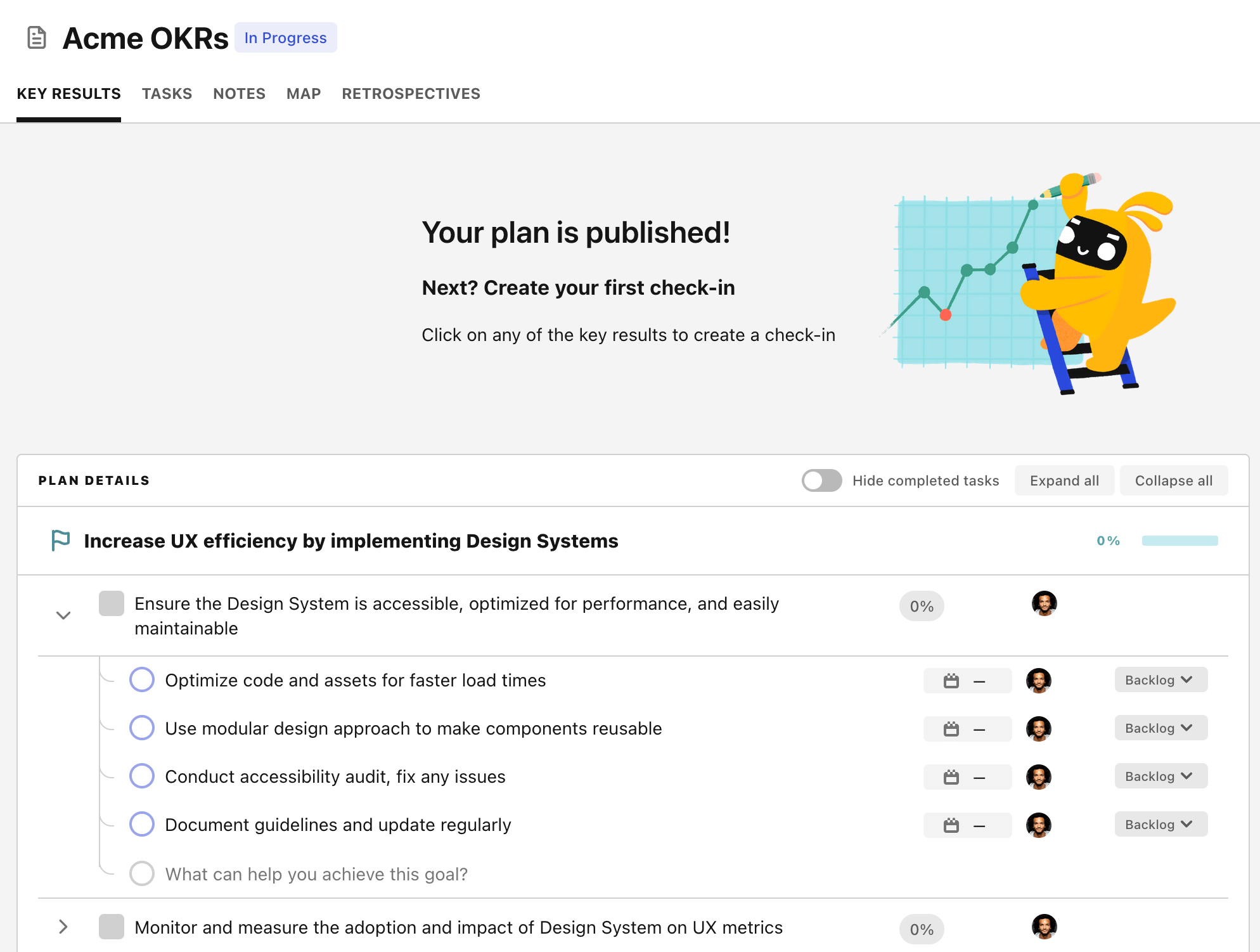OKR template to establish a productive routine that fits my goals
Your OKR template
The second objective is about assessing and adjusting the routine each week to ensure it fits with changing priorities. This requires a regular review – on Mondays – and the ability to identify and prioritize needs as they arise. Adaptability and constant assessment underlie this particular objective.
The final objective focuses on task prioritization. The goal is to ensure that 60% of the day is spent working towards the top three daily goals. This includes identifying the goals, allocating specific hours to each, and continuously monitoring time usage to make necessary adjustments.
The overarching theme is personal development, productivity, and efficient time management. By defining clear objectives, creating a flexible routine, and prioritizing tasks, the aim is to work smarter, not harder, and see tangible improvements in personal growth.
ObjectiveEstablish a productive routine that fits my goals
KRDefine clear, achievable goals for personal improvement by Week 1
KRAssess and adjust routine weekly for continuous alignment with changing priorities
Adjust routine accordingly
Review weekly routine every Monday
Identify and prioritize changing needs
KRPrioritize tasks to spend 60% of the time on top 3 goals every day
Allocate specific hours to each goal
Identify your top three goals for the day
Continually monitor and adjust time usage
How to edit and track OKRs with Tability
You'll probably want to edit the examples in this post, and Tability is the perfect tool for it.
Tability is an AI-powered platform that helps teams set better goals, monitor execution, and get help to achieve their objectives faster.
With Tability you can:
- Use AI to draft a complete set of OKRs in seconds
- Connect your OKRs and team goals to your project
- Automate reporting with integrations and built-in dashboard
Instead of having to copy the content of the OKR examples in a doc or spreadsheet, you can use Tability’s magic importer to start using any of the examples in this page.
The import process can be done in seconds, allowing you to edit OKRs directly in a platform that knows how to manage and track goals.
Step 1. Sign up for a free Tability account
Go tohttps://tability.app/signup and create your account (it's free!)
Step 2. Create a plan
Follow the steps after your onboarding to create your first plan, you should get to a page that looks like the picture below.

Step 3. Use the magic importer
Click on Use magic import to open up the Magic Import modal.
Now, go back to the OKR examples, and click on Copy on the example that you’d like to use.

Paste the content in the text import section. Don’t worry about the formatting, Tability’s AI will be able to parse it!

Now, just click on Import from text and let the magic happen.

Once your example is in the plan editor, you will be able to:
- Edit the objectives, key results, and tasks
- Click on the target 0 → 100% to set better target
- Use the tips and the AI to refine your goals
Step 4. Publish your plan
Once you’re done editing, you can publish your plan to switch to the goal-tracking mode.

From there you will have access to all the features that will help you and your team save hours with OKR reporting.
- 10+ built-in dashboards to visualise progress on your goals
- Weekly reminders, data connectors, and smart notifications
- 9 views to map OKRs to strategic projects
- Strategy map to align teams at scale